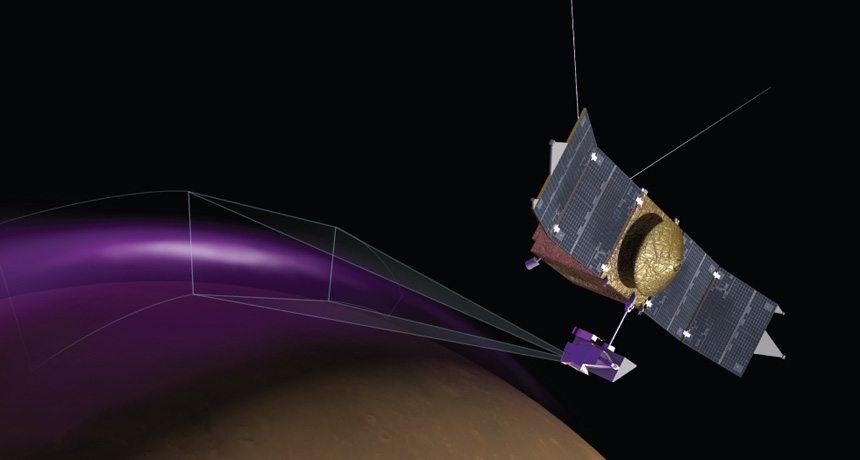Martian aurora, high-altitude dust clouds surprise scientists
MAVEN mission data provide insights, provoke questions about Red Planet

BRING TO LIGHT An ultraviolet camera on the MAVEN probe, illustrated, captures the eerie glow from a Martian aurora, similar to the northern lights on Earth.
Univ. of Colorado